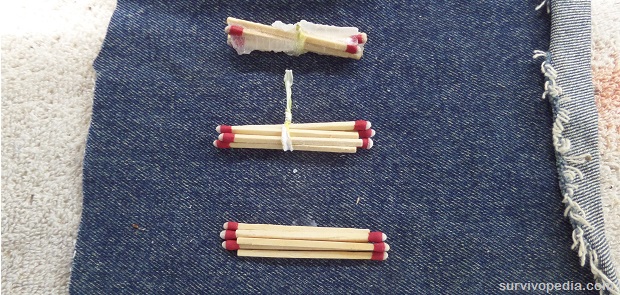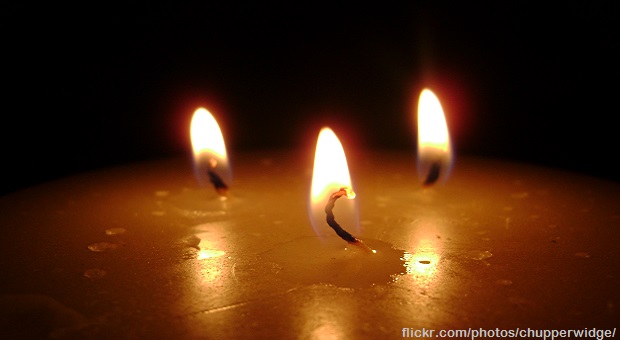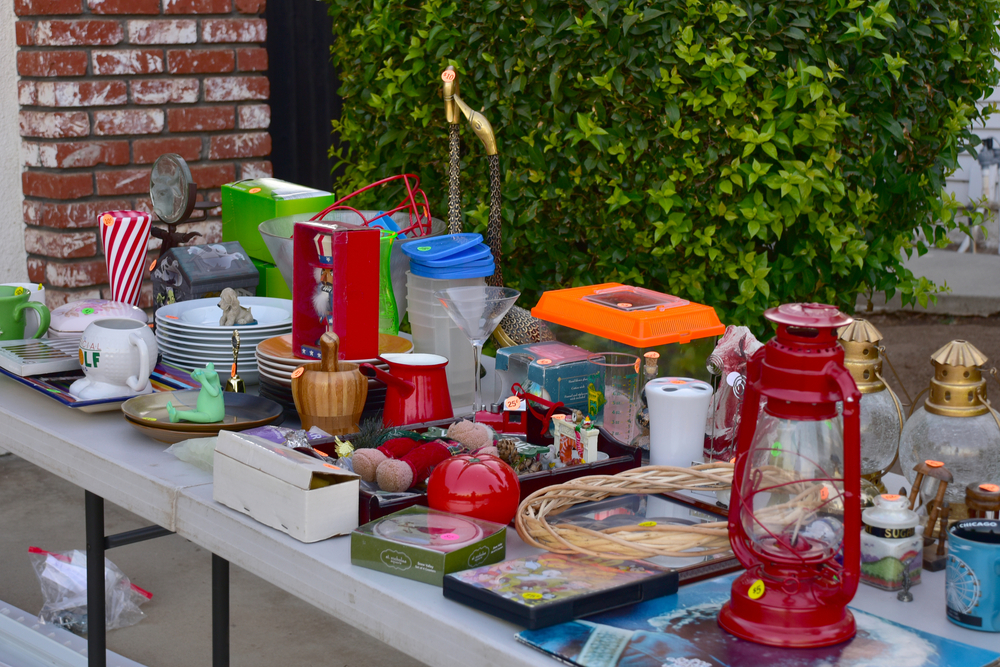Paraffin wax and survival: what do they have in common? Quite a bit, actually. Now, if you’re not familiar with paraffin wax, you should know that you’re not alone.
Many people tend to disregard its uses, but in the prepping world, paraffin wax is that kind of Swiss army knife thing, a multipurpose tool that can be used in lots of scenarios, ranging from every day occurrences to SHTF situations.
I know what you’re thinking: a block of wax is pretty far from inspiring or exciting. How many Bear Grylls types have a boring, white chunk of paraffin wax in their survival kit? I bet you never saw any commando movie where the world is saved with paraffin wax and a few good marines but its use is underrated.
However, you should be aware of the fact that you can improvise a lot of important survival-related tasks using a substance common in grocery stores, not in hardware supplies.
Let’s Begin With a Crash Course in Paraffin’s History
Paraffin wax is a synthetic substance, derived from processing petroleum and it’s been around for over one hundred years. One of the greatest benefits of its discovery was that it probably saved at least a couple of whale species from extinction, because before paraffin wax was invented, people used to hunt whales for their fat alone to make candles.
For example, candle waxes and lamps used for illumination in the 19th century were all based on whale fat, which was also popular for numerous other industrial or household purposes.
Whale populations dropped dramatically in that sinister coal burning, steam engine growling industrial age and some species were close to extinction (a few whale species are actually extinct from that period) when a cheaper petroleum based paraffin wax was invented.
Nowadays, paraffin has lots of purposes, like candy making or food canning (it’s used for sealing jars) or in the dental industry, but you can use it for survival too, and that’s why we’re here.
Where can you get your own dull and boring block of paraffin wax? Well, there are a number of both online (eBay, Amazon) and offline suppliers, including hardware stores or hobby shops and lots of manufacturers, like Gulf Wax.
Some of the Most Useful Situations When Paraffin Wax Comes Handy
1. Use paraffin wax for DIY candles. Since paraffin wax is a flammable hydrocarbon because it’s petroleum-based and it’s quite easy to mold into any shape you like, making candles using paraffin wax is a no-brainer. To achieve this Promethean goal, you’ll require paraffin wax, wicks (plant based preferably) and (optionally) a few glass jars.
The wick can be easily improvised from jute cordage, sisal rope, a home-made string (plant fiber), a cotton string or you can use cotton cloth (ripped apart in slender strips). The next step is to put a slender hole in the candle shaped block of paraffin wax.
Next, insert the wick and you’re ready to go- you’ve built yourself a survival candle! All you have to do is to light it up and you’re ready to go. As a supplementary tip, you can melt the block of paraffin wax and pour it into a glass jar. You can use a squared piece of aluminum foil with a whole in the middle to keep the wick straight as the paraffin cools off.
You will thread the wick through the respective hole and into the glass jar filled with hot wax, seal the jar around with the aluminum foil and wait for the wax to solidify. In this way, you’ll create a super-long-lasting candle.
2. Use paraffin wax for waterproofing your gear. Interesting concept, isn’t it? Paraffin is excellent for using as waterproofing for various types of survival gear. For example, you can make your matches or tinder waterproof, not to mention containers, water skins and what not with only a quick dip in a container filled with melted paraffin, creating a water repellant coating.
For waterproofing matches, you’ll have to bring the paraffin to its melting point and then plunge the matches in paraffin for just a moment, pull them out quickly and blow on them until they cool off and the wax hardens. You must solidify the wax as soon as possible, because if you don’t, the paraffin will impregnate into the match head and render it useless.

After you’ve finished the procedure, don’t forget to test a few matches, to see if they work good and proper. Remember that before striking the match, you’ll need to remove the protective paraffin layer from its head or else the match won’t light up and you’ll ruin the match box striker strip by smearing wax all over it.
If you’re hardcore, you can apply a thin coating of paraffin wax on your survival clothing (pants, jacket etc.), on your boots and even on your bug out bag. I can’t say it will make them waterproof, but at least they’ll be more water resistant.
3. Paraffin wax is the most affordable lubricant on the market, making it ideal for, let’s say, lubricating zippers, scissors or shears; basically any type of tools or equipment. A neat trick involving paraffin wax is to use it when you’re trying to make fire using the legendary bow and drill method. In this situation, you’ll lubricate the top end of the friction fire set, which needs to be as friction free as humanly possible.
4. You can protect your skin in a SHTF scenario using paraffin wax. I am not kidding either, women used paraffin wax for centuries, mixed with various other substances like shea butter and various essential oils for keeping the skin on their hands, feet or face silky smooth and soft.
When it comes to survival, I’m not preoccupied with beauty, but will use paraffin to protect my skin against wind, rain, cold weather, scratches or other types of lesions. You can DIY your own healing potion or salve by mixing paraffin wax with hot olive oil.
Basically, you’ll have to grate a small piece of paraffin into a couple ounces of (hot) olive oil and let it cool off. If the “healing salve” potion is too runny, you just add a little more paraffin into the mix, if it’s too stiff, you just add a little bit more olive oil.
Another interesting and centuries-old use for paraffin is to apply it using moist heat to your sore feet or hands, thus relieving the pain and or stiffness common in osteoarthritis. Paraffin wax is extremely good when it comes to reducing pain or loosening up your hands and joints before you exercise, so keep that in mind.
5. You can use paraffin wax as a rust inhibitor, for keeping your survival gear in perfect order by preventing them from rusting and losing their edge. You don’t have to apply paraffin in a thick coating, just renew it as soon as possible after you’ve used the respective gear, especially when you’re in wet, muddy climates or environments.
You can safely rub paraffin on knives, hatchets and basically any metallic tool that’s prone to oxidation or rust. You can also apply paraffin for better traction and cutting action on splitting mauls, axes or shovels.
6. Paraffin wax is excellent for using as a fire starter when you’re out in the wild. You can use a one or two inch strip of newspaper or something similar, roll it tight and use a piece of string or a rubber band to keep it secured. Then, you dip it in paraffin wax and wait it to cool off. You can put it in your bug out bag or your backpack; it will come in handy when you’ll need to start a fire because the paraffin is flammable but will burn more slowly than the paper alone.
7. You can use a mix of paraffin wax, turpentine and linseed oil to create a liquid which is excellent for waterproofing a bag or a cloth tarp. You just have to treat or paint the respective piece of material with the mix, then heat treat it using a blow dryer or a heat gun in order to set the paraffin wax combo inside the fabric.
If you have some different use for paraffin in mind, just tell us about it in the comment section below.
This article has been written by Chris Black for Survivopedia.







































































You can save lint from your dryer. Put it in an egg carton. After the carton is full melt paraffin and drizzle over the sections. Let cool. When you need a fire starter just tear one section off – light and use it to start your fire. Use it like kindling. I have dozens of egg cartons saved.
Use the paper cartons or you’ll have to dig it out before using it. (You really don’t want to burn the styrofoam.)
Hi,sir ,this is Dhaval I m pen manufacturer and want to use the wax to prevent linkage of ink from it’s nozzle …writing ink is made from petroleum products and different chemicals and nozzle is made of brass and nickle silver matel…so which type of wax we can use…please help me ..sir
I`m wanting to make my own fire logs from chipped tree trimming`s & dead grass.I`ve heard paraffin is a good bonding agent.Any information or advice would be greatly appreciated.
Can I use paraffin wax to seal jars of pickles and chutney
When I was growing up, I was a girl scout and my mother was a girl scout leader. Before the troop went on a camping trip (and we went on a lot of those!), I can still remember my mother making “fire-starters” in our kitchen. She would fill cardboard egg cartons with cedar/pine shavings (the kind sold in pet shops as bedding for pet mice, hamsters and rabbits, etc.) and then with melted parafin. Be careful to place the egg carton on wax paper or aluminum foil when filling and while the parafin is hardening because the cardboard will absorb the parafin and may damage the surface that the egg carton is on if it is not protected! Break off sections of the egg carton as needed. These fire-starters never failed to light our fires! Dryer lint makes a perfect fire-starter but if you want to make some fire-starters immediately and don’t have a supply of dryer lint, this method would work while you are stockpiling dryer lint!
Can i use gulf wax or solid paraffin wax for hurricane lamps? Basically I’m trying to create a substitute for liquid paraffin as it us not easy to find when at camp. Is there at additive you can use that will keep it liquid once you melt the parrafin yet will absorb into the wick so you can light the lamp? Thanks for any help!
Hi
I’m enjoying these wonderful ideas of ways the paraffin wax can create!
My question…I had a root canal the top front eye tooth that did not take, until I can get the tooth replaced, I have a fake tooth, will the paraffin wax be safe and effective for holding the tooth ??
Thanks for any suggestions!
Suzianna